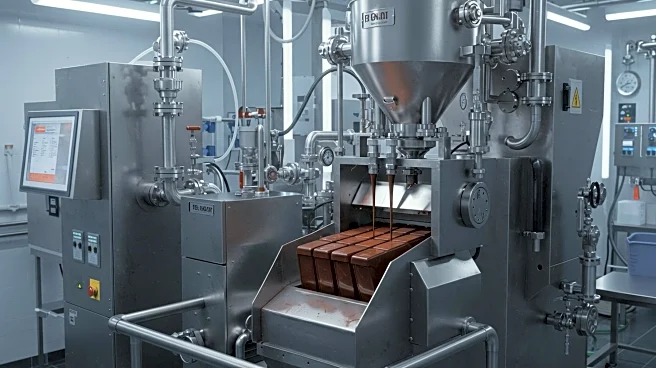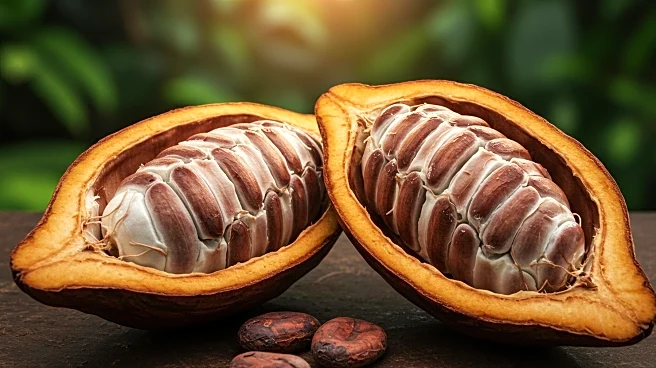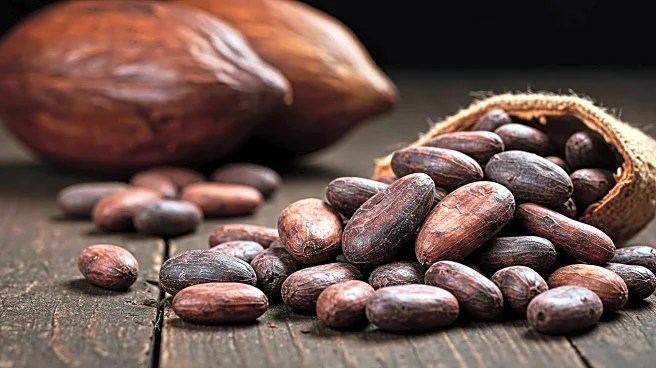What is the story about?
What's Happening?
Researchers from the University of Nottingham's School of Biosciences have discovered key factors influencing chocolate flavor during the cocoa bean fermentation process. This breakthrough could enable chocolate producers to consistently craft high-quality, flavor-rich chocolate. The study, published in Nature Microbiology, identifies how cacao bean temperature, pH, and microbial communities interact during fermentation to shape chocolate flavor. The research highlights the importance of both abiotic factors, such as temperature and pH, and biotic factors, including microbial communities, in flavor development. Traditionally, fermentation is a natural, microbe-driven process occurring directly on cocoa farms, where harvested beans are exposed to naturally occurring bacteria and fungi. This spontaneous fermentation is largely uncontrolled, leading to variability in flavor and quality across different harvests and regions. The researchers collaborated with Colombian farmers to identify factors influencing flavor and developed a lab fermentation process using a defined microbial community. This synthetic community successfully replicated the dynamics of traditional fermentations, producing chocolate with fine-flavor characteristics.
Why It's Important?
The findings from this study have significant implications for the chocolate industry, offering a method to standardize and control the fermentation process, thus ensuring consistent flavor outcomes. By shifting from spontaneous, uncontrolled fermentations to a standardized, science-driven process, chocolate producers can maximize their cocoa crops and reliably predict flavor outcomes. This research could revolutionize chocolate production, similar to how starter cultures transformed beer and cheese production. The ability to domesticate the fermentation process and use defined starter cultures could unlock novel flavor possibilities and elevate chocolate quality globally. This advancement not only benefits chocolate producers but also consumers, who can expect more consistent and high-quality chocolate products.
What's Next?
The next steps involve further refining the lab fermentation process and exploring its commercial applications. Chocolate producers may begin adopting these controlled fermentation techniques to enhance product consistency and quality. Additionally, further research could explore the potential for new flavor profiles and innovations in chocolate production. Stakeholders in the chocolate industry, including farmers, producers, and retailers, may collaborate to implement these findings and improve the overall chocolate supply chain.
Beyond the Headlines
This development raises ethical and cultural considerations regarding traditional fermentation practices and the livelihoods of cocoa farmers. While controlled fermentation offers consistency, it may impact traditional methods and the unique flavors associated with specific regions. Balancing innovation with respect for cultural practices and ensuring fair compensation for farmers will be crucial as the industry evolves.
AI Generated Content
Do you find this article useful?











